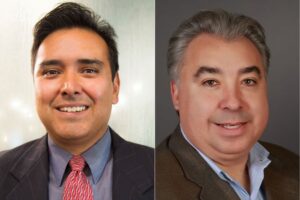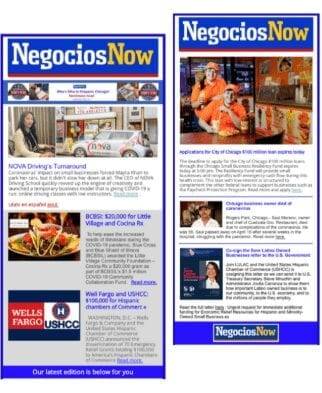By Ulises Silva*
When six area parishes and concerned residents of the troubled Pilsen neighborhood pooled their resources in 1990 to address Pilsen’s challenges, they couldn’t have imagined the impact of their decisions over the next 25 years. That from their $30,000 seed fund, millions would be invested in Pilsen, Back of the Yards, and Melrose Park, and millions more preserved in Little Village through the historic rescue of a savings and loan institution. Even more, that the decisions made in 1990 would result in a model that may resurrect neighborhoods across the country for decades to come.
Such is the story of The Resurrection Project (TRP), an organization whose innovation has correlated with the unique, evolving needs of Chicago’s Southwest side. Its Community Resurrection Model (CRM) has helped TRP leverage its initial $30,000 seed fund into more than $346 million in community investment.
The CRM takes an integrated, 3-pillar approach to creating healthy communities. Community Ownership activates neighborhood leaders, parent mentors, and other agents of change; Community Wealth Building empowers people with financial knowledge to build wealth and start businesses; Stewardship of Community Assets allows TRP to develop affordable homes and community assets, the foundation for healthy, sustainable communities.
The model started modestly enough. In 1990, Community Ownership worked alongside parish allies and partner organizations to civically engage residents and clean up Pilsen—literally and figuratively. Organized residents demanded that the city begin regular garbage pickups and shut down seedy bars and dangerous gang hangouts.
TRP’s Stewardship of Community Assets pillar began by rehabilitating small apartment buildings. Five years later, TRP and more than 1,000 community leaders challenged then-Mayor Richard Daley to invest $2 million into Pilsen to create new homes. That investment helped TRP leverage the funds to create 500 new and affordable single- and multi-family homes.
TRP’s Community Wealth Building pillar began by offering free financial literacy workshops led by volunteers. These helped community residents understand how to budget, improve their credit, and build up savings.
But TRP has always sought to imagine better things for its communities. Better homes. Better financial health. Better community programs. This drive to always imagine more to address the community’s needs is why TRP evolved into a powerful social enterprise that seamlessly blends community development, community organizing, and advocacy with human service delivery.
Community Ownership, for example, now includes early education initiatives, parent-mentor programs, immigration services, and other programs aimed at empowering children, parents, and immigrant families. In 2012, La Casa Student Housing and Resource Center was developed to offer underserved college students the resources and support to complete a four-year degree while living at an affordable, supportive academic environment.
Community Wealth Building now offers a home purchase program, free foreclosure prevention counseling, and small business services. Participants aren’t just building savings; they’re building wealth and investing in their communities by becoming homeowners and entrepreneurs. In 2013, this pillar was instrumental in the historic rescue of Second Federal Savings & Loan, whose liquidation could have resulted in more than 1,000 foreclosures. TRP orchestrated a rescue by engaging Self-Help Federal Credit Union, Wintrust Financial, and the MacArthur Foundation to resurrect the bank as Second Federal Credit Union, the largest community development credit union in Illinois.
Stewardship of Community Assets has now developed more than 600 units of quality, affordable housing, including its newest building, Casa Querétaro, a 45-unit apartment building that will open in December and offer area families premium apartments at affordable rates.
Even now, TRP is imagining more. Its Vision 2020 strategic plan is aiming to do more in the next five years than it’s achieved in the previous 25. By 2020, TRP expects to have empowered more than 60,000 individuals and leveraged more than $460 million in community investment.
TRP’s past achievements and future vision have converged seamlessly during its 25th year of operation, giving the organization a renewed sense of purpose and dedication as it embarks on its ambitious five-year plan for growth. It’s fitting, then, that TRP will celebrate its 25th anniversary with the Imagine More Gala on October 22, 2015. The event will be held at the historic Palmer House Hilton. You can purchase tickets to the event by visiting www.resurrectionproject.org.
TRP’s vision will be celebrated at the gala, but the work toward Vision 2020 has already begun in earnest. Casa Querétaro, expanded immigration services, and a forthcoming CDFI are just a few of TRP’s new initiatives for 2016.
And over the course of the next five years—and beyond—TRP is challenging not just itself but its partners, its supporters, and its participants to imagine more. Not just for Chicago’s neighborhoods, but for neighborhoods across the country.
*Ulises Silva is the Director of Communications for the Resurrection Project.










